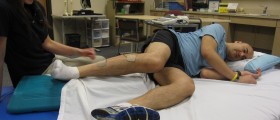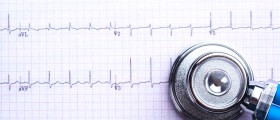
What is EMG?
EMG is the abbreviation for electromyography, a technique and a rather simple diagnostic approach which measures and evaluates the electrical activity of skeletal muscles. The results of the test are assessed during the exam and they are also recorded on the paper in the form of a diagram known as electromyogram. The device used in the process is called electromyograph.
The technique is of great importance since it provides with the insight in the activity of certain muscles once they are get stimulated with electrical currents. The test can easily confirm or rue out abnormalities such as lack of muscle response to stimulation or even complete absence of contractions. This makes EMG a powerful diagnostic tool and a standard procedure when certain neurological disorders are diagnosed.
Apart from being used in diagnostic purposes, electromyography can also check the progress after some treatments have been introduced.
The electrical source generates electrical signals which are delivered to certain muscles and activate these to contract. Such signals are translated into graphs, sounds or even numerical values and then interpreted by a specialist. Electrical signals are transmitted to the tested muscles with the assistance of tiny little electrodes. These are either placed on the surface of the skin, right above the muscle we want to stimulate or inserted directly into the muscle. Needle electrodes, similarly to superficial electrodes send electrical impulses which trigger muscle contraction.
All in all, EMG gives us information about inadequate nerve and/or muscle function as well as abnormalities regarding the very connection of the nerves and muscles they innervate. Without EMG medical experts are not capable of confirming damage to specific tissues and test the efficacy of administered treatments.
How is Procedure Done?
As it has already been mentioned there are two types of electromyography, the first one when electrodes are placed superficially (surface EMG) and the other when they are in the form of needles inserted into the tested muscles (needle and fine-wire or intramuscular EMG). Depending on the doctor's assumptions and several more factors one of the available techniques is chosen.
Intramuscular EMG is invasive compared to surface EMG. It starts with the insertion of a needle electrode into the tested muscle. While this is done a trained professional observes the electrical activity and records so called insertional activity. This insertional activity gives insight in the state of the muscle and its innervating nerve. Namely, even at rest if muscles are preserved there is some electrical activity which can be recorded and evaluated. Absence of electrical activity at this point is not a good sign since it may be a result of severe muscle/nerve damage.
The next step is observation of the electrical activity when the nerve is at rest. If an examiner records abnormal spontaneous activity at rest this definitely confirms the damage to either the muscle or the nerve. Under normal circumstances there is no electrical activity when muscles are resting and are not used.
Once testing at rest is finished patients are asked to contract the tested muscle. Such activity results in specific changes regarding the shape, size and frequency of the motor unit potential, all of which are measured and judged. The same process takes place with every single electrode. The specialist uses a number of electrodes since skeletal muscles differ in their structure and with more electrodes the quality of the exam significantly improves.
Sometimes examiners opt for less invasive technique, the aforementioned surface EMG. In this case the electrodes are placed on the surface of the skin, right above the tested muscle. In case there is electrical activity present, patients get notified with an auditory or visual stimulus. This way they know that the tested muscle has been activated. More reliable results are perhaps obtained with intramuscular EMG, when electrodes directly measure the electrical activity of the muscles.
As far as risks of electromyography are concerned, these are practically of no great concern. However, most patients who undergo intramuscular EMG do complain about discomfort when the needles are placed in their muscles. The tested muscles may remain sore for a couple of days after the procedure. One should never worry about infections or perhaps transmission of certain diseases because all patients are treated with disposable needles.
As for superficial electrodes, these might cause a mild shock when placed on the skin. The unpleasant sensation quickly subsides and does not repeat.
In order to know what to expect patients get fully inform about the procedure and the course of it in advance. They need to understand the importance of the test and they even might experience discomfort withstand the entire procedure for the purpose of determining the final diagnosis. Full co-operation with the specialist performing the test is a must.
All in all, electromyography is a perfect way for doctors to get fully informed about damage to skeletal muscles or nerves that innervate them, which is characteristic of various neurological disorders. The test is never used alone so the definitive diagnosis is confirmed once the results of other test such as MRI./CT scan or laboratory tests are obtained.

















Your thoughts on this
Loading...